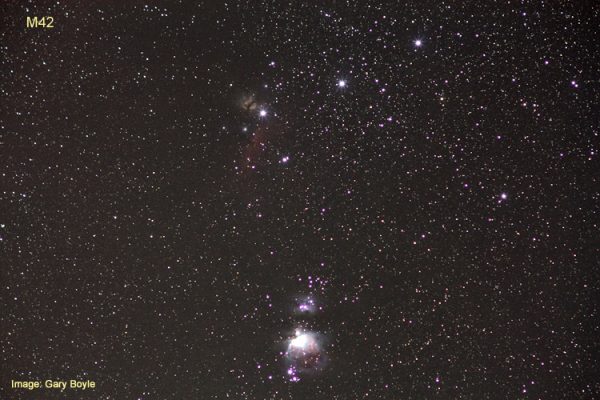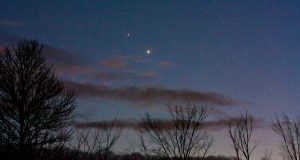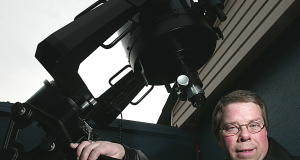The stars we see on a clear night have been burning for millions or billions of years. But how did they come to be? Stars, like our sun, are created from vast interstellar clouds of gas and dust called a nebula. These stellar objects can measure more than a hundred light-years in length. Over time smaller clouds in the nebula might rub against each other or the shockwave of a nearby supernova might disturb the cloud to start a slight spinning motion.
As the cloud rotates, it picks up speed as more gas starts condensing and collapsing towards the middle as gravity accelerates the process. The core continuing getting hotter and grows, much like the snowball effect. Over time the star grows to a critical mass, temperatures in the core reach about fifteen million degrees, the star lights up. It took our sun about 50 million years to grow.
These regions of star birth are also called a “stellar nursery” and you can easily see one tonight. It is called the Orion Nebula or M42. The constellation Orion the Hunter now rises in the east a couple of hours after sunset. Locate the iconic three stars in a row forming his belt. Look down the imaginary sword hanging off the belt and you will see a hazy patch of light. This is where thousands of stars will eventually be born but the process will still take millions of year.
The Orion Nebula resides an estimated 1,500 light-years from us and measures about 30 light-years in width. The Hubble Space Telescope has imaged small cocoons of material showing the baby starforming in the swirling cloud of dust and gas. Like many stars, possible exoplanets will be born from the leftover dusty material. This is the same process our solar system followed in its early birth.
Our Milky Way contains hundreds of these emission nebulas but a telescope is required to locate and observe them. M42 is an easy target for the unaided eye or binoculars. It is also well placed on the celestial equator allowing the northern and southern hemispheres to see it.
- The annual Geminid Meteor shower - December 12, 2025
- Full Moon Names - June 10, 2025
- March Lunar and Solar Eclipses - March 4, 2025
 Wawa-news.com You can't hear the 'big picture'!
Wawa-news.com You can't hear the 'big picture'!


